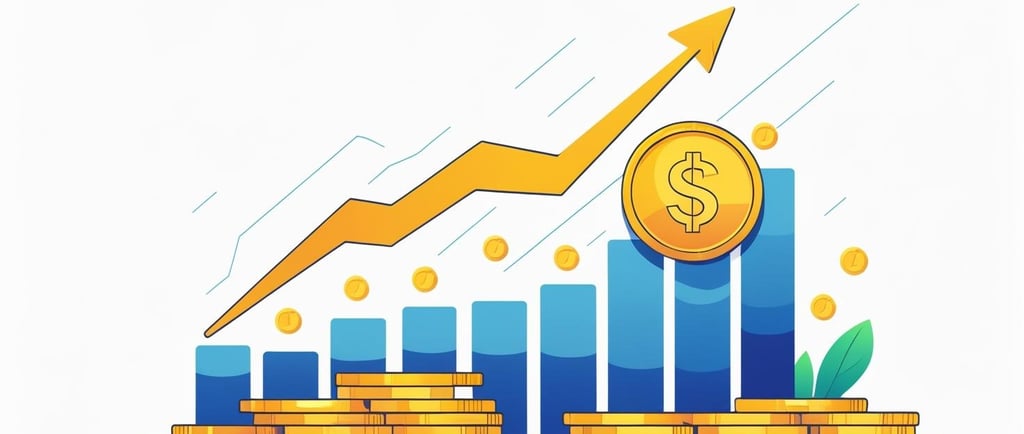Is It Better to Save or Invest in 2025? Here's What Americans Should Know
Wondering whether to save or invest in 2025? Discover what works best for your money goals, how to reduce risk, and when to start — even with just $100.
Jason Brooks — Financial Writer at Finovista
8/4/20253 min read


Is It Better to Save or Invest in 2025? Here's What Americans Should Know
It’s the most common financial question out there:
“Should I save my money or invest it?”
In 2025, with rising living costs, uncertain markets, and higher interest rates, knowing when to save and when to invest has never been more important. The truth? Both saving and investing play different but equally crucial roles in building a stable financial future.
In this post, we’ll break it all down — in plain English — so you can make smarter money decisions no matter where you’re starting from.
💰 Saving vs. Investing: What’s the Difference?
Before we dive into what’s “better,” let’s make sure we understand the difference:
✅ Saving:
Putting money aside (usually in a bank)
Accessible, low risk, low return
Examples: Emergency fund, short-term goals
✅ Investing:
Using money to buy assets like stocks, real estate, or ETFs
Higher risk, but higher potential return over time
Examples: Retirement, wealth building, long-term goals
Think of saving as protecting your money, and investing as growing your money.
📉 When Should You Save?
There are moments when saving is the smarter option. Here’s when:
1. You don’t have an emergency fund
Every American should have at least $1,000–$2,000 set aside for emergencies — even more if you have a family or unstable income.
2. You need the money soon
Buying a car in 6 months? Getting married next year? Don’t risk investing. Use a high-yield savings account instead.
3. You’re in debt
It often makes more sense to pay down high-interest debt before investing. Paying off a 20% APR credit card is like getting a guaranteed 20% return.
📈 When Should You Invest?
If your basic savings are covered, investing is the best way to build wealth over time.
1. You’re saving for the long term
If your goal is 5+ years away (retirement, buying a house), investing in the stock market or index funds will likely beat savings accounts.
2. You want to beat inflation
Inflation in the U.S. has averaged around 2–3% per year. Most savings accounts don’t grow fast enough to keep up. Investments, on the other hand, can offer 7–10% annual returns over time.
3. You want to build passive income
Dividend stocks, real estate, or REITs can provide monthly or quarterly income, while your money continues to grow.
💡 Can I Do Both?
Absolutely — and you should. It’s not a battle between saving vs investing. Instead, you need both in your financial toolkit.
Here's a simple breakdown:
Goal Save or Invest? Emergency Fund-Save-Vacation in 6 months Save Buying a house in 5 years Invest (conservatively) Retirement Invest (long term)Child’s college in 10 yrs Invest Medical bills next month Save
🧠 How to Start Saving (The Smart Way)
Open a high-yield savings account (Ally, Capital One, SoFi, etc.)
Automate transfers every payday
Set a “starter emergency goal” of $1,000, then work up to 3–6 months of expenses
Avoid using your savings unless it’s a true emergency
🚀 How to Start Investing in 2025 (Even With $100)
Think investing is only for rich people? Not anymore.
Here’s how to get started:
Use beginner-friendly apps:
Try Fidelity, SoFi Invest, Charles Schwab, or RobinhoodBuy index funds or ETFs:
Like the S&P 500 ETF (VOO) — low risk, high diversificationAutomate monthly contributions:
Start with $25/month if that’s all you can manage. Time in the market beats timing the market.Don’t panic during downturns:
Stay consistent. The market may dip, but historically it always recovers.
❌ Common Myths (That Stop People From Investing)
“It’s too risky” — Not if you’re investing long-term and diversifying
“I don’t have enough money” — You can start with $5
“I need to know everything first” — You learn as you go
Don’t wait for the “perfect time.” The earlier you start, the more you benefit from compound growth.
🧮 Rule of Thumb: The 80/20 Split
If you're new to managing money in 2025, a simple method is:
80% of your money for saving (short-term goals + emergency fund)
20% of your money for investing (long-term growth)
As your financial foundation gets stronger, you can shift toward more investing.
📌 Final Thoughts: Save First, Then Invest Boldly
So… is it better to save or invest in 2025?
Both are essential.
Save to protect your future.
Invest to grow your future.
Start small. Be consistent. And don’t underestimate what even $100/month can do over the next 10 years.
Stay tuned to Finovista for more smart finance guides — and start taking control of your money today.
Finance
Your go-to source for smart finance tips.
Blog
Tips
+1 (646) 555-0198
© 2025. All rights reserved.